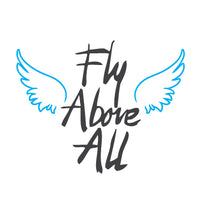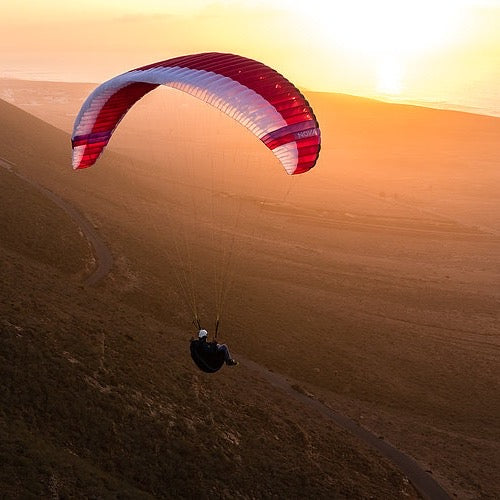
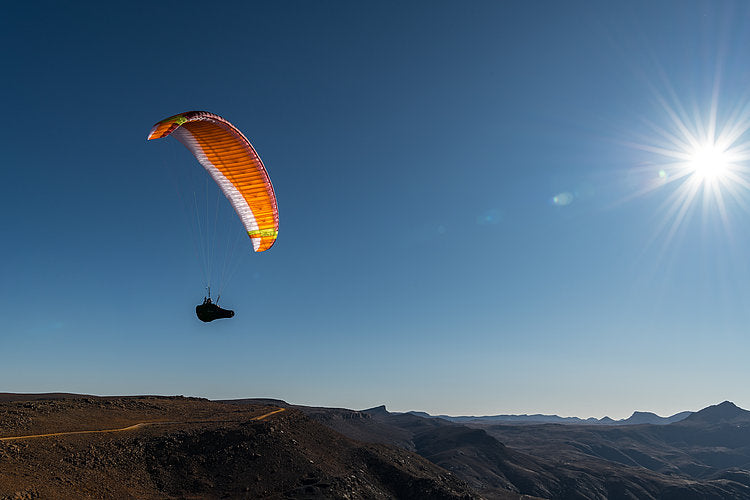
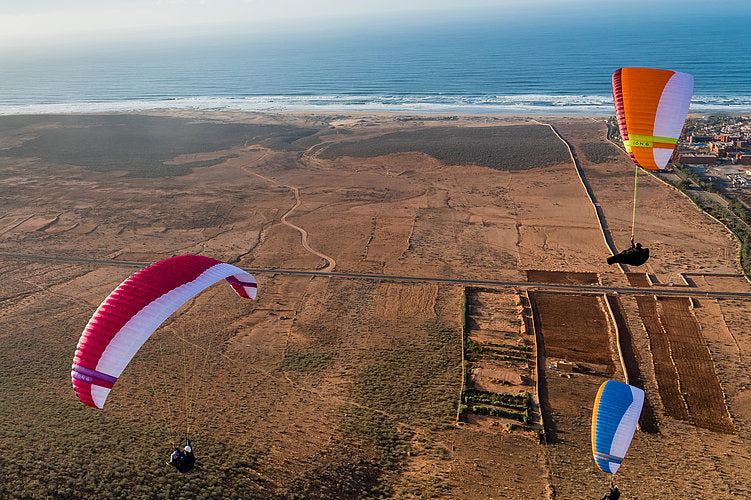
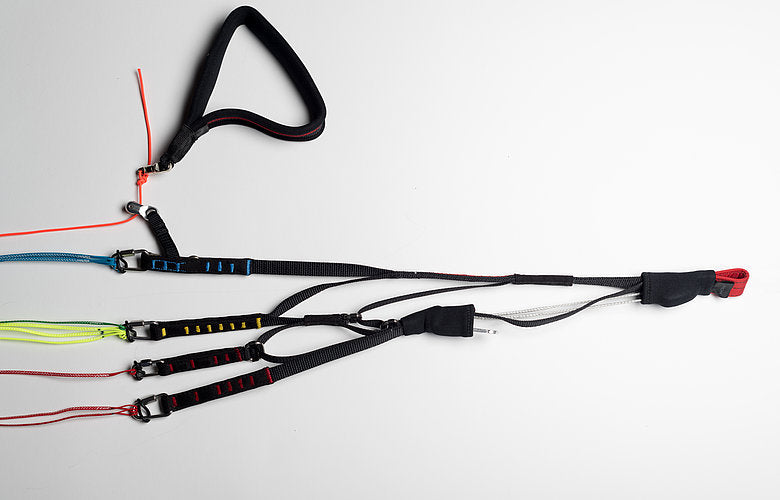
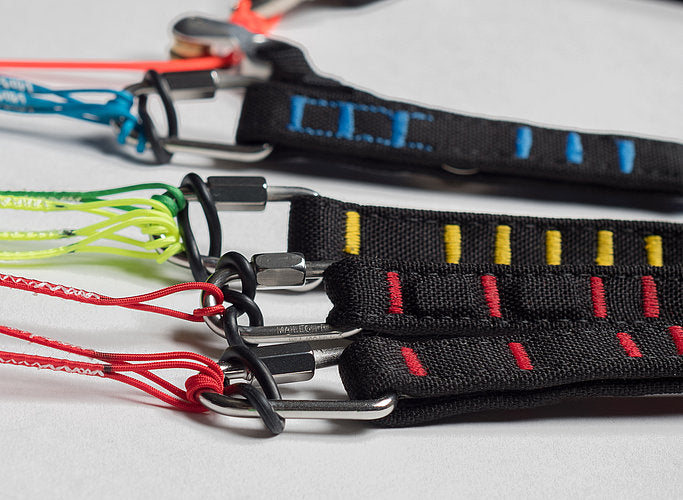


ION 6
The fundamentally redesigned ION 6 (EN/LTF B) is the next generation of the popular ION series. The result: high passive safety, particularly precise handling and maximum performance to achieve personal XC goals.

Room for ambition. No matter where and how far you fly, with the ION 6 nothing stands in the way of a personal best flight. But on this journey the fun does not fall by the wayside, because simple launch behaviour, pleasant handling and an effective speed system are included as standard. Or put differently, with the ION 6, both pilots new to the EN B class and (XC) professionals are well-equipped for every adventure - be it at the local site, when chasing kilometres or on paragliding trips.

Form follows function. The line length and thus the distance between the pilot and the canopy is significantly reduced on the ION 6. This results in more direct handling in the air as well as advantages during take off. For example, it requires less room to lay out the canopy and the wing inflates quickly and reliably. Additionally, the curvature of the wing has been reduced, meaning the canopy is “flatter”. This increases the roll damping and ensures stable flight. Due to the short lines, and despite the high roll damping, the ION 6 reacts precisely to brake inputs - and the pilot can feel what is happening above them without delay. Another consequence of the reduced curvature is the increased projected aspect ratio (3.84) compared to the ION 5 (3.52). However, the flat aspect ratio has increased by only 0.6%.

Relaxed from A to B. Successful cross-country flying requires complete concentration. The ION 6 makes this easy to do with its high level of passive safety, leaving you time to enjoy the view on the way. In flight, it quickly becomes clear that it can be turned particularly flat - i.e. you can’t “overcook it" when you want to fly a tight turn. This means you lose less height and can use even weak thermals effectively. But banking it higher, if you want a little more dynamics, is easily possible and this requires little brake travel and moderate brake pressure. In addition, the ION 6 has mini-ribs with internal seams, which increase the performance of the glider and ensure a smooth trailing edge. The other features built into the wing are a Mini-Rib Vector Tape and 3D Shaping at the leading edge.

Simply keep track of things. The ION 6 has specially designed adjustable risers. This system is also used, for example, on the MENTOR 6 (EN/LTF B) and the SECTOR (EN/LTF C). What does this mean? The A3 line is shortened less during acceleration than the A1 and A2 lines. This increased the stability of the wing during accelerated flight. Apart from that, the risers are standard and are very user-friendly on launch and during ground handling. The coloured markings for right and left, which also continue on the brake handles and the carabiners of our harnesses, make it easy to check whether you have hooked in correctly. By the way… line sorting is also easy, because the ION 6 has sheathed main, brake and stabilo lines and follows the colour scheme recommended by the PMA: A = red, B = yellow, C = blue, brake = orange, stabilo line = green.
Pilot target group

For six generations, the ION has enabled both talented beginners (in countries where training with EN B gliders is permitted) and recreational pilots with cross-country ambitions to further refine their skills. It offers high passive safety, direct handling and performance in one - which gives it great potential to assist pilots in their development. If you want to increase both XC duration and distance, you will find that there must be a match between your own ability to concentrate and the attention that the glider itself demands. This is where the ION 6 really shines and enables relaxed flights. The target group of pilots for whom this glider is suitable is correspondingly broad.
Short and compact

3D-Shaping. In addition to the standard 3D-Shaping there is a Zig-zag 3D-Shaping seam on each cell. The advantage is that this seam doesn’t run in the direction of the spanwise force. This means the seam runs more cleanly and is more aerodynamically advantageous. This innovation reduces the creases in the leading edge.

Mini-ribs. Mini-ribs increase the number of cells in the rear wing area and thus provide an aerodynamically optimised trailing edge. The necessary seams are on the inside. The mini-ribs also help to keep the brake pressure moderate.

Mini-Rib Vector Tape. In the ION 6, an additional vector tape runs through slots in the mini-ribs. This tape reduces the crease that is created when braking. This markedly increases climb performance and handling. Additionally, there is a brake gathering system on the trailing edge. These features mean the ION 6 has a beautiful, smooth trailing edge, even when the brakes are applied.

Optimised risers. The risers of the ION 6 consist of 12 mm wide risers and have a built-in wing twist adjustment, which shortens the A3 line less than A1 and A2 during acceleration. This increases the stability of the wing during accelerated flight. During launch and ground handling a magnet below the maillons holds the two A-risers together, allowing a better overview. In addition, small straps fitted into metal eyelets prevent the risers from twisting during acceleration.

New design. The central design element is the sweep, which visually emphasises the aspect ratio of the wing, complemented by a differently coloured banderole on the outer wing. The product and brand name can be seen on the banderoles. What is special about the banderole is that its placement and composition across several cells varies slightly from model to model.
Technical data
| XXS | XS | S | M | L | ||
| Number of cells | 51 | |||||
| Projected span | m | 8,38 | 8,82 | 9,26 | 9,66 | 10,10 |
| Projected area | m² | 18,30 | 20,28 | 22,34 | 24,34 | 26,38 |
| Projected aspect ratio | ||||||
| Flat span | m | 10,51 | 11,06 | 11,61 | 12,12 | 12,62 |
| Flat area | m² | 21,28 | 23,57 | 25,97 | 28,30 | 30,67 |
| Flat aspect ratio | 5,19 | |||||
| Line length | m | 5,75 | 6,08 | 6,41 | 6,71 | 7,01 |
| Total line length | m | 213 | 224 | 236 | 246 | 257 |
| Max. chord | m | 2,52 | 2,65 | 2,78 | 2,90 | 3,02 |
| Weight | kg | 4,20 | 4,45 | 4,70 | 5,00 | 5,30 |
| Legal take-off weight | kg | 60-80 | 70-90 | 80-100 | 90-110 | 100-130 |
| Certification (EN/LTF) | B | B | B | B |
B |
|
